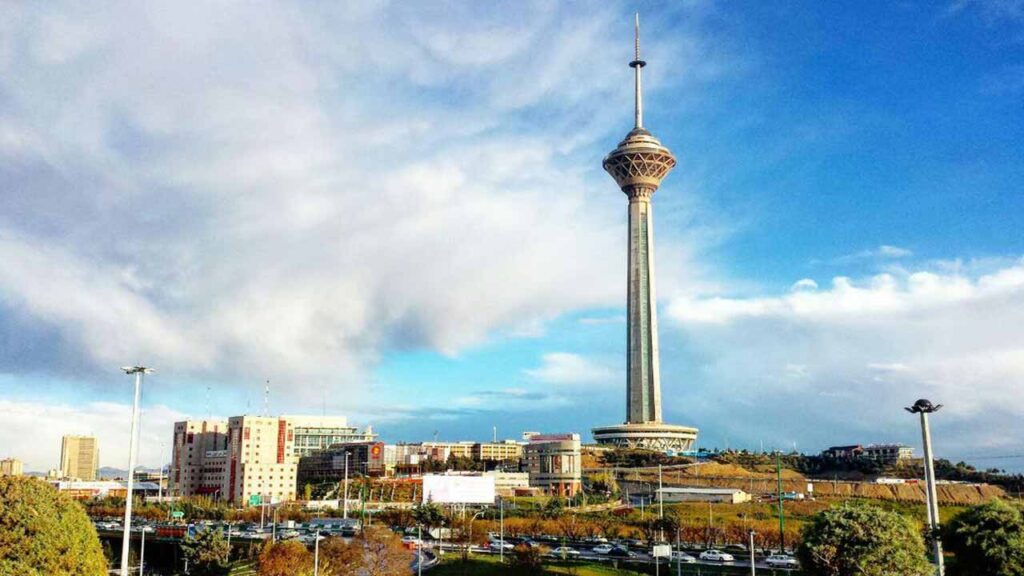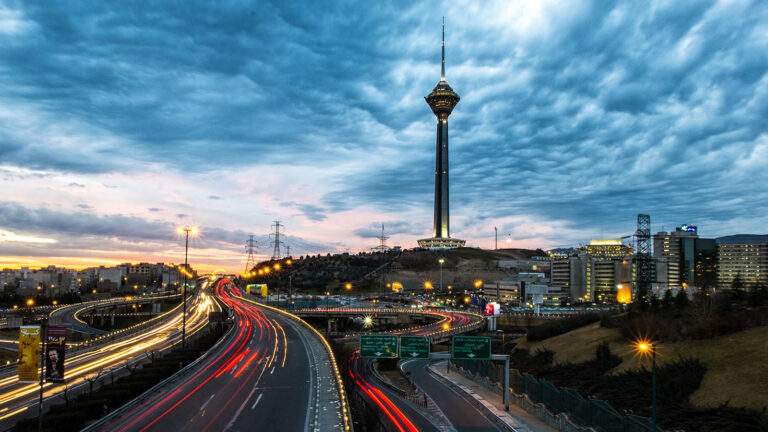
Iran is one of the richest countries in terms of historical and modern architecture. Iranian architecture is a combination of authenticity, beauty, and advanced engineering, shaped throughout history by culture, religion, and geographical conditions. From ancient structures to modern masterpieces, Iran is home to some of the most beautiful architectural works in the world. Below, we introduce some of the most significant architectural landmarks of Iran.
Persepolis is one of the most magnificent ancient structures in the world and a symbol of Achaemenid architecture, located in the Fars province. This grand complex, built during the reign of Darius the Great and his successors, includes royal palaces, massive columns, and intricate relief carvings, reflecting the culture, art, and power of the Achaemenid Empire
Key Features of Persepolis:
- Use of large stone blocks in construction
- Tall and majestic columns with bull and lion capitals
- Cuneiform inscriptions recording historical events
- Grand stairways with detailed relief carvings
Sheikh Lotfollah Mosque, located in Naqsh-e Jahan Square in Isfahan, is one of the most beautiful mosques in Iran and the world. Built during the reign of Shah Abbas I, it stands out for its exquisite tilework and stunning dome, despite lacking minarets and a courtyard.
Key Features of Sheikh Lotfollah Mosque:
- Intricate mosaic tilework in shades of blue, turquoise, and yellow
- Elegant calligraphy of Quranic verses
- Natural lighting design, creating a color-changing effect inside the dome
- Unique minaret-free structure
Khaju Bridge in Isfahan is one of the most beautiful historical bridges in the world, built during the Safavid era. It served not only as a transportation route and water management structure but also as a cultural and recreational space.
Key Features of Khaju Bridge:
- Two-story structure with arched design
- Dual-purpose bridge and dam function
- Advanced water flow management system for Zayandeh Rud River
- Artistic paintings and decorative tilework on the bridge’s surface
Arg-e Bam, located in Kerman province, is the largest adobe structure in the world and one of the most significant examples of Iranian architecture. With a history of over 2,500 years, it represents the ingenuity of Iranian engineers in adobe construction.
Key Features of Arg-e Bam:
- Built entirely from mud bricks
- A city-like structure with towers, a market, baths, and residential houses
- Strategic defensive design
- Undergoing restoration after the 2003 earthquake
Azadi Tower is one of Tehran’s most iconic landmarks and a fine example of modern architecture inspired by Persian traditions. Designed by Iranian architect Hossein Amanat in 1971, the tower blends elements of Islamic, Achaemenid, and Sassanid architecture.
Key Features of Azadi Tower:
- Fusion of Persian architectural styles
- White marble exterior
- 45-meter-high curved design
- Interior spaces including a museum, exhibition hall, and cultural galleries
Tabatabaei House, one of the most stunning historical houses in Kashan, was built during the Qajar era. It reflects the essence of traditional Persian residential architecture, carefully designed for the hot and dry climate.
Key Features of Tabatabaei House:
- Beautiful courtyards with fountains and gardens
- Over 40 rooms, 4 courtyards, and 3 windcatchers
- Ornate stained-glass windows filtering sunlight beautifully
- Natural cooling system using windcatchers and underground chambers
Nasir al-Mulk Mosque, located in Shiraz, is one of the most unique mosques in Iran, famous for its stained-glass windows and mesmerizing interior lighting effects.
Key Features of Nasir al-Mulk Mosque:
- Vibrant stained-glass windows creating colorful light effects when sunlight passes through
- Exquisite tilework with floral and geometric patterns
- Intricate Quranic calligraphy decorating the interior
- Smart architectural design for temperature control across seasons
Standing at 435 meters, Milad Tower is the tallest structure in Iran and one of Tehran’s modern landmarks. In addition to its telecommunications function, it houses a revolving restaurant, observation deck, shopping centers, and exhibition halls.
Key Features of Milad Tower:
- Aerodynamic design resistant to earthquakes
- 360-degree observation deck with breathtaking views of Tehran
- Revolving restaurant at the top
- Durable reinforced concrete structure
Conclusion
Iranian architecture is among the most distinguished architectural styles globally, reflecting a blend of creativity, advanced engineering, artistry, and cultural heritage. From breathtaking historical monuments to contemporary structures, each architectural masterpiece in Iran represents the intelligence, creativity, and artistry of Iranian civilization throughout history.


No comments yet.